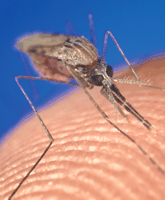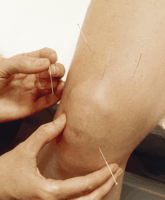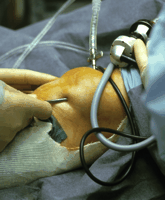This week in the BMJ
Volume 329,
Number 7476,
Issue of 20 Nov 2004
![[Down]](/icons/down.gif) Multidisciplinary rehabilitation improves COPD
Multidisciplinary rehabilitation improves COPD
![[Down]](/icons/down.gif) Malaria is overdiagnosed in Tanzania
Malaria is overdiagnosed in Tanzania
![[Down]](/icons/down.gif) Acupuncture helps treat osteoarthritis
Acupuncture helps treat osteoarthritis
![[Down]](/icons/down.gif) Reviewing orthopaedics for osteoarthritis
Reviewing orthopaedics for osteoarthritis
![[Down]](/icons/down.gif) Economic evaluations exclude important health consequences
Economic evaluations exclude important health consequences
Multidisciplinary rehabilitation improves COPD
Early pulmonary rehabilitation improves exercise capacity and health status of patients after acute exacerbations of chronic obstructive pulmonary disease (COPD). Man and colleagues (p 1209) randomised 42 patients to an eight week outpatient rehabilitation programme within 10 days of hospital discharge or usual care. After three months patients who received the intervention were significantly more mobile, reported less dyspnoea and fatigue, and scored better on self administered, disease specific questionnaires.
![[To top]](/icons/back.gif)
Malaria is overdiagnosed in Tanzania
Misdiagnosing malaria in Tanzania is associated with a failure to treat alternative causes of severe infection. Reyburn and colleagues (p 1212) prospectively observed 4474 patients diagnosed with severe malaria in 10 Tanzanian hospitals during a period of one year. Fewer than a third of adults had the disease, and most children in areas of moderate or low transmission were parasite-free. Many of those who died of severe febrile disease who had no parasites had been treated with antimalarials but not antibiotics.

| |
Credit: JIM GATHANY/CDC
|
|
![[To top]](/icons/back.gif)
Acupuncture helps treat osteoarthritis
Acupuncture given as a complementary therapy to drug treatment for osteoarthritis of the knee improves the effectiveness of treatment. Vas and colleagues (p 1216) randomised 97 outpatients with osteoarthritis of the knee to acupuncture or placebo. Both groups were also prescribed diclofenac in the same dose but were instructed to reduce the dose if symptoms improved. Those who received acupuncture took significantly less diclofenac and had less stiffness and more physical function in the knee.

| |
Credit: MARK THOMAS/SPL
|
|
![[To top]](/icons/back.gif)
Reviewing orthopaedics for osteoarthritis
Most patients referred to orthopaedic surgeons for osteoarthritis of the knee have a debilitating disease. Gidwani and Fairbank (p 1220) present currently available treatments, from steroid injections and viscosupplementation to arthroscopic debridement, osteotomy, and unicompartmental and total knee replacement. They discuss indications and likely outcomes, emphasising that the role of the newest technologies such as computer assisted surgery (image guidance) and minimally invasive surgery remains to be established.

| |
Credit: P MARAZZI/SPL
|
|
![[To top]](/icons/back.gif)
Economic evaluations exclude important health consequences
Cost effectiveness analyses are based on aiming to achieve an assumed societal objective of maximising health. However, little evidence exists that this is the desired objective of the public or decision makers. Coast (p 1233) describes the evolution of economic evaluation in health care and explores the assumptions underlying current approaches and the resulting concerns. She suggests an alternative—cost consequences analyses—that would better approach the objectives of decision makers and would be easier to understand. Different options would be contrasted explicitly for all relevant costs and consequences, allowing decision makers to set their own values to them.
![[To top]](/icons/back.gif)
Multidisciplinary rehabilitation improves COPD
Malaria is overdiagnosed in Tanzania
Acupuncture helps treat osteoarthritis
Reviewing orthopaedics for osteoarthritis
Economic evaluations exclude important health consequences



